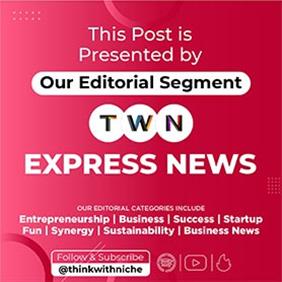Donald Trump's Tariffs Forecasted to Shrink U.S. Economy, Says JPMorgan

News Synopsis
JPMorgan Chase & Co. has forecasted a looming recession for the United States in 2025, attributing this downturn to the recent tariffs imposed by President Donald Trump. The bank's chief U.S. economist, Michael Feroli, indicated that the nation's gross domestic product (GDP) is projected to shrink under the strain of these tariffs.
In a note to clients, U.S. economist, Michael Feroli, stated, "We now expect real GDP to contract under the weight of the tariffs, and for the full year (4Q/4Q) we now look for real GDP growth of -0.3%, down from 1.3% previously." He further projected that this economic contraction would elevate the unemployment rate to 5.3%.
Market Reactions and Economic Forecasts
The announcement of these tariffs has led to significant market volatility. The S&P 500 index experienced a sharp decline, erasing $5.4 trillion in market value over two trading sessions. This reaction underscores the financial community's apprehension regarding the potential economic repercussions of the tariffs.
Other financial institutions have echoed JPMorgan's concerns. Barclays Plc anticipates a GDP contraction in 2025, aligning with recessionary conditions. Similarly, Citi economists have adjusted their growth forecast for the year to a mere 0.1%, while UBS economists predict a modest 0.4% growth. Jonathan Pingle, UBS's chief U.S. economist, highlighted that U.S. imports could decline by over 20% in the coming quarters, reverting import levels as a share of GDP to those seen before 1986.
Federal Reserve's Stance
Federal Reserve Chair Jerome Powell has expressed concerns about the tariffs' potential to exacerbate inflation and decelerate economic growth. Speaking at a conference in Arlington, Virginia, Powell remarked that the economic impact of the tariffs is likely more substantial than initially anticipated.
He emphasized the Federal Reserve's commitment to maintaining stable long-term inflation expectations and indicated that, despite market anticipations of rate cuts, the Fed may maintain or even raise interest rates to counteract inflationary pressures.
Details of the President Trump'sTariff Plan
President Donald Trump’s tariff strategy involves a 10% levy on imports from all countries, effective April 5. Starting April 9, nations with significant trade deficits with the U.S., including India, will face higher, individualized tariffs. India, for instance, is set to encounter a 26% tariff on all its exports to the U.S.
Conclusion
The escalating trade tensions triggered by President Donald Trump’s new tariff policies have prompted dire economic forecasts from major financial institutions. JPMorgan Chase & Co. now predicts a U.S. recession in 2025, with real GDP expected to shrink by 0.3% and unemployment rising to 5.3%.
Other banks like Barclays, Citi, and UBS have also downgraded their growth projections, underlining the widespread concern. The market reaction has been swift and severe, with the S&P 500 losing $5.4 trillion in value over two days. Federal Reserve Chair Jerome Powell has raised alarms over the inflationary impact of the tariffs, complicating the Fed’s monetary policy decisions.
With reciprocal tariffs targeting key trading partners such as India, global trade flows are expected to contract sharply. As economic uncertainty deepens, businesses, consumers, and policymakers alike must brace for potential turbulence in the months ahead, while carefully assessing the long-term ramifications of protectionist policies on the global economy.
You May Like









